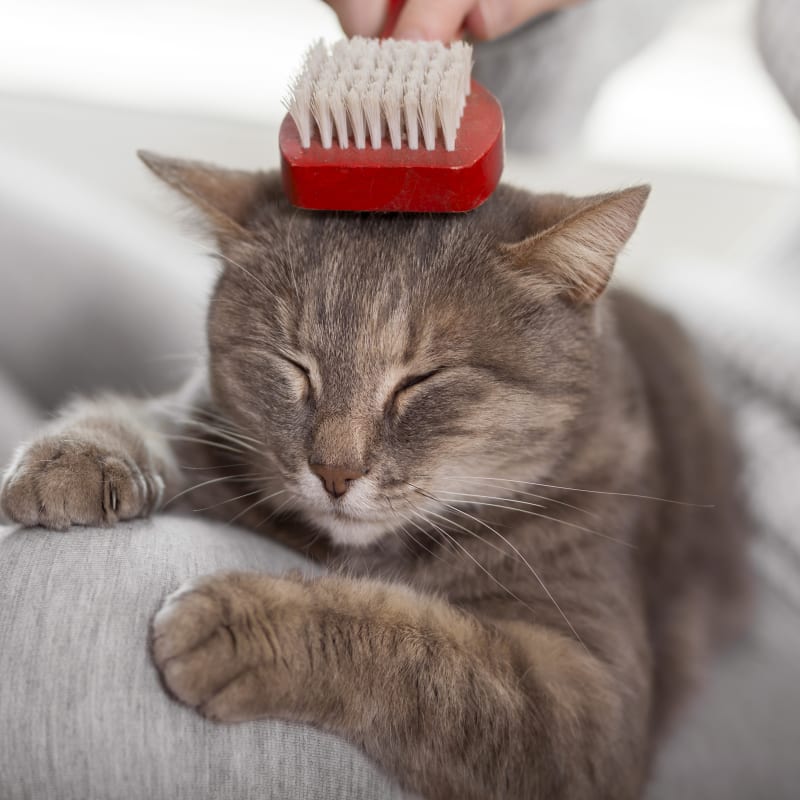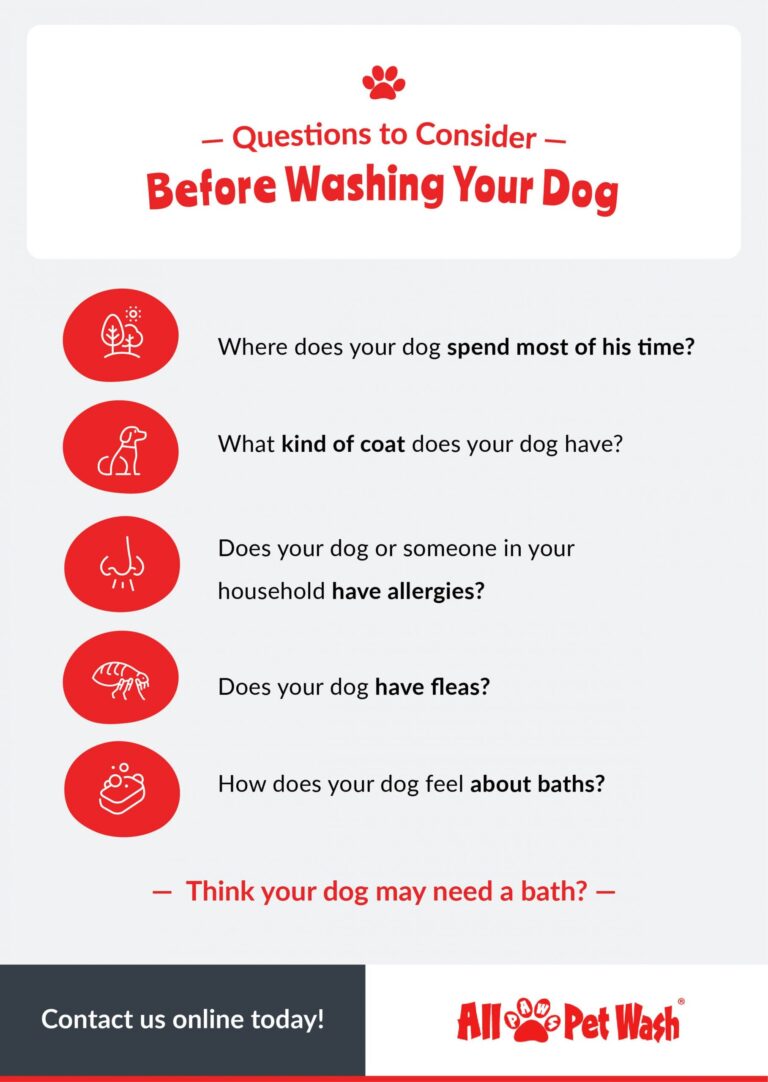Keeping your furry friend clean is an essential part of their overall well-being. One common question that many pet owners face is, “How often should you shower a dog?” The frequency of bathing your dog largely depends on various factors such as their breed, lifestyle, and coat type. While some dogs may need weekly baths to maintain their hygiene, others may only require a bath once every few months.
Understanding the specific needs of your dog is crucial in determining the appropriate bathing schedule to prevent skin issues and maintain a healthy coat. In this blog post, we will delve into the factors that influence how often you should shower your dog and provide helpful tips to ensure your beloved canine companion stays clean and healthy.
Introduction to Pet Hygiene
Ensuring proper hygiene for your beloved furry friend is essential for their health and overall well-being. One crucial aspect of pet hygiene is regular bathing, which raises the question, “How often should you shower a dog?”. Maintaining cleanliness not only keeps your pet smelling fresh but also helps prevent skin infections and other health issues.
Factors to Consider
When determining the frequency of bathing your dog, consider factors such as breed, coat type, and lifestyle habits. Certain breeds require more frequent baths, while others can go longer between washes. Always consult with your veterinarian for personalized advice.
Signs of Overwashing
While cleanliness is crucial, overwashing can strip your dog’s skin of natural oils, leading to dryness and irritation. Look out for signs such as itchiness, redness, or flakiness, which may indicate that you are bathing your pet too frequently.

Importance of Regular Showers for Dogs
Regular showers for dogs are essential for maintaining their overall health and well-being. Just like humans, dogs need to be cleaned regularly to prevent skin infections, remove dirt, and eliminate unpleasant odors. Bathing your dog helps in reducing shedding and managing allergies. It also provides an opportunity to check for any abnormalities such as lumps, ticks, or parasites.
Preventing Skin Issues
Regular baths can help in preventing skin problems such as hot spots and dermatitis, keeping your dog’s skin healthy and free from irritations. Proper drying after a bath is essential to prevent moisture-related skin infections.
Managing Allergies
Bathing your dog helps in removing allergens like pollen and dust from their coat, reducing the risk of allergic reactions for both your pet and family members. Use a hypoallergenic shampoo to minimize skin irritation.
Factors Affecting Shower Frequency
Showering your dog is important for their hygiene, but the frequency may vary based on several factors.
1. Breed and Coat Type
Different dog breeds have varying grooming needs. Dogs with longer hair or thick coats may need more frequent showers to prevent matting and skin issues.
2. Activity Level
Dogs that are more active may get dirtier quickly and require more frequent showers. Regular walks in parks or playing outdoors can lead to more frequent baths.
3. Skin Condition
Pets with skin conditions may require specific shampoos and bathing schedules recommended by veterinarians to maintain skin health.
Guidelines for Showering Your Dog
Regularly bathing your dog is essential for maintaining their hygiene and overall health. When it comes to the question of how often should you shower a dog, the answer varies depending on several factors such as breed, activity level, and skin condition.
Frequency of Bathing
Most dogs should be bathed every 4-6 weeks to prevent skin irritation and maintain a clean coat. However, some breeds with oily skin may require more frequent baths, while others with dry skin should be bathed less often.
It’s important to use a mild dog shampoo that is specifically formulated for canine skin to avoid drying out their coat.
Proper Bathing Technique
Before bathing your dog, brush their coat to remove any tangles and loose fur. Use lukewarm water to wet your dog thoroughly, avoiding their eyes and ears. Apply shampoo and lather gently, then rinse well to prevent residue buildup.
- Ensure to dry your dog completely with a towel or blow dryer to prevent skin infections.
- Regular grooming can help reduce the necessity of frequent baths.
Choosing the Right Shampoo and Products
When it comes to how often should you shower a dog, selecting the right shampoo and grooming products is crucial for maintaining your pet’s hygiene. Opt for products that are specifically formulated for dogs to ensure they cater to their unique skin and coat needs.
Consider Your Dog’s Skin Type
Just like humans, dogs have different skin types. Choosing a shampoo that matches your dog’s skin type is essential to prevent any skin irritations or issues. Consult your veterinarian if you are unsure about your dog’s specific skin condition.
Check the Ingredient List
Always read the ingredient list on pet grooming products to ensure they do not contain harsh chemicals or allergens that could be harmful to your dog’s skin. Look for natural ingredients like oatmeal or aloe vera that are gentle and soothing.
Tips for a Successful Bath Time
Keeping your furry friend clean and fresh is essential for their overall health and well-being. When it comes to bath time, here are some tips to make the experience stress-free and enjoyable for both you and your pet.
Use Pet-Friendly Products
Make sure to use high-quality shampoo and conditioner specifically formulated for dogs. Avoid using human products as they can be too harsh for your pet’s skin.
Choose products that are gentle, hypoallergenic, and suited for your dog’s coat type and skin condition. Always check with your vet to ensure you are using the right products.
Proper Bathing Technique
Start by brushing your dog’s coat to remove any tangles or mats before bath time. Use lukewarm water and wet your pet thoroughly, avoiding the ears and eyes. Speak softly and offer treats to keep your dog calm and relaxed.
- Gently massage the shampoo into your dog’s fur, focusing on the areas that tend to get the dirtiest.
- Rinse thoroughly to ensure all the soap is removed, as residual shampoo can cause skin irritation.
- Use a towel to dry your dog or a blow dryer on a low setting if they are comfortable with the noise.
Signs of Over-Bathing Your Dog
Over-bathing your dog can have negative consequences on their skin and coat. It is essential to know the signs indicating that you might be bathing your dog too frequently. Keep an eye out for the following:
1. Dry and Flaky Skin
Dogs’ natural oils can be stripped away with too much bathing strongly impacting their skin’s moisture levels. This can lead to dry, flaky skin, causing itchiness and discomfort for your dog.
2. Irritation and Redness
Excessive bathing can irritate your dog’s skin, leading to redness and inflammation. Watch out for any signs of irritation, such as constant scratching or red patches on their skin.
3. Dull and Brittle Coat
Constant bathing can strip away the natural oils that keep your dog’s coat shiny and healthy. This can result in a dull, brittle coat that lacks luster and may feel rough to the touch.
Frequently Asked Questions
- Is it necessary to shower a dog regularly?
- Yes, it is necessary to shower a dog regularly to maintain their hygiene and keep them clean and healthy.
- How often should I shower my dog?
- The frequency of showering a dog depends on their breed, health, and lifestyle. In general, most dogs benefit from a bath every 1-3 months, but some may require more frequent baths.
- Can bathing a dog too frequently be harmful?
- Yes, bathing a dog too frequently can strip their skin and coat of natural oils, leading to dryness and potential skin issues. It is important to follow the recommended bathing frequency based on your dog’s needs.
- What factors should I consider when determining how often to shower my dog?
- When determining how often to shower your dog, consider factors such as their breed, coat type, activity level, skin conditions, and any specific hygiene needs they may have.
- How can I keep my dog clean between baths?
- To keep your dog clean between baths, you can brush them regularly to remove loose fur and dirt, wipe them down with pet wipes, and make sure their living environment is clean.
Final Thoughts
Understanding how often you should shower your dog is crucial for maintaining their hygiene and health. While there is no one-size-fits-all answer, considering factors like breed, lifestyle, and skin conditions can help you determine the right bathing frequency.
Remember, over-bathing can strip your dog’s coat of essential oils, leading to skin irritation, while infrequent baths can result in a smelly and dirty pet. Regular grooming, such as brushing and wiping down, can also help keep your furry friend clean between baths.
Consulting with your veterinarian or a professional groomer can provide personalized recommendations for your dog’s bathing schedule. By prioritizing your pet’s hygiene needs, you can ensure they stay happy, healthy, and fresh-smelling!



